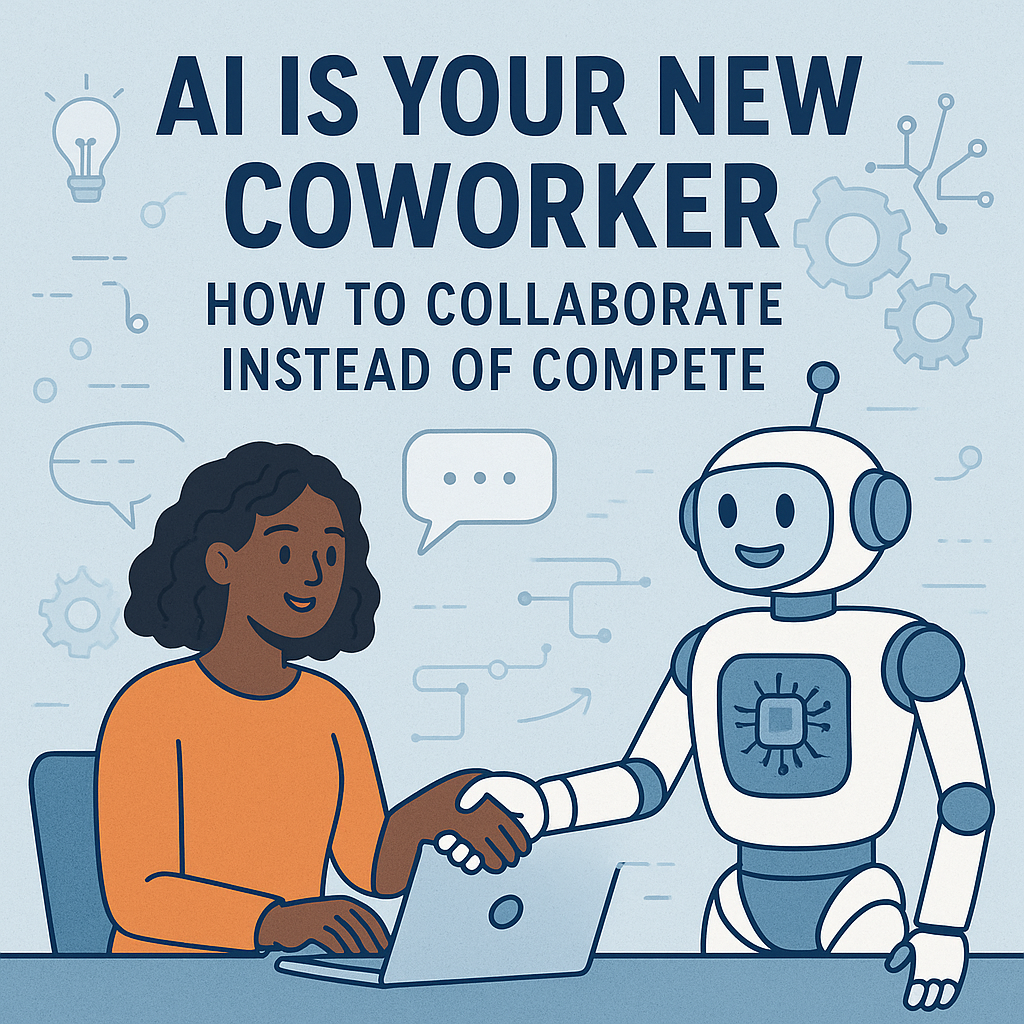
AI is Your New Coworker: How to Collaborate Instead of Compete
As we move further into the 21st century, the integration of artificial intelligence (AI) into our daily lives is becoming more prevalent. AI is now being used in areas like customer service, healthcare, transportation, and even our workplaces. In fact, AI is increasingly becoming your new coworker. But instead of considering AI as a competitor, we need to view it as a collaborator. This blog post will delve into the ways we can collaborate with AI and how it can enhance our work life.
Embracing the AI Revolution
Before we go into the specifics of collaboration, it’s important to understand why we need to embrace AI rather than fear it. AI is not here to take away our jobs, but to enhance them.
-
Automation of repetitive tasks: AI can handle tedious and repetitive tasks, freeing up human workers to focus on higher-level tasks that require creativity and strategic thinking.
-
Decision-making: AI can analyze large amounts of data much faster than humans, helping businesses make informed decisions.
-
24/7 availability: AI systems can work around the clock without breaks, providing constant support and service.
-
Reducing human error: AI can help minimize mistakes in tasks that require precision and accuracy.
Shifting the Perspective: From Competition to Collaboration
The first step in collaborating with AI is to shift our perspective. Instead of viewing AI as a competitor that will take away jobs, we should see it as a tool that can help us work more efficiently and effectively.
AI as a Tool, Not a Threat
AI is a tool designed to make tasks easier and more efficient. It’s not here to replace humans but to work alongside them. By delegating repetitive tasks to AI, we can focus on more complex and creative tasks.
Collaborative Intelligence
The concept of collaborative intelligence involves combining the strengths of both humans and AI. Humans excel at tasks involving creativity, critical thinking, and emotional intelligence. On the other hand, AI excels at tasks involving data analysis, pattern recognition, and processing large amounts of information. By combining these strengths, we can achieve more than either could on their own.
Practical Ways to Collaborate with AI at Work
Now let’s dive into some practical ways you can collaborate with AI in your workplace.
Delegating Tasks to AI
As mentioned earlier, one of the main benefits of AI is its ability to handle repetitive tasks. By delegating these tasks to AI, you can free up your time to focus on higher-level tasks.
For example, AI can handle tasks like:
- Scheduling meetings
- Sorting and responding to emails
- Data entry and analysis
- Customer support
Using AI for Decision-Making
AI can analyze large amounts of data much faster than a human can. This can be incredibly useful for making informed decisions. For example, AI can help businesses analyze customer behavior to improve their products or services. It can also help predict market trends or identify potential risks.
AI for Learning and Development
AI can also be used for learning and development. For example, AI-powered training programs can provide personalized learning experiences, adapting to the learner’s pace and style of learning. AI can also provide real-time feedback, helping employees improve their skills and knowledge.
Overcoming the Challenges of AI Collaboration
While there are many benefits to collaborating with AI, there are also challenges that need to be addressed.
Lack of Understanding
One of the main challenges is a lack of understanding about what AI is and how it works. This can lead to fear and resistance among employees. To overcome this, businesses need to provide education and training on AI.
Ethical Concerns
AI also brings up ethical concerns, such as privacy and bias. Businesses need to ensure that they're using AI responsibly and transparently, and that they're taking steps to minimize bias in AI algorithms.
Technical Challenges
Lastly, there are technical challenges to implementing and using AI. These include data quality issues, integration difficulties, and the need for ongoing maintenance and updates. To overcome these challenges, businesses may need to invest in technical expertise and support.
Conclusion: The Future is Collaborative
As AI continues to evolve and become more integrated into our workplaces, the future of work is collaborative. By embracing AI as a coworker rather than a competitor, we can take advantage of the many benefits it offers, from automating repetitive tasks to aiding in decision-making.
However, collaboration with AI also requires overcoming challenges, from lack of understanding and ethical concerns to technical difficulties. By addressing these challenges and fostering a culture of collaboration and learning, we can ensure that we're using AI in a way that benefits everyone.
Remember, AI is not here to replace us, but to work with us. By collaborating with AI, we can create a more efficient, productive, and innovative workplace. So let's welcome our new AI coworkers and look forward to the exciting possibilities they bring.